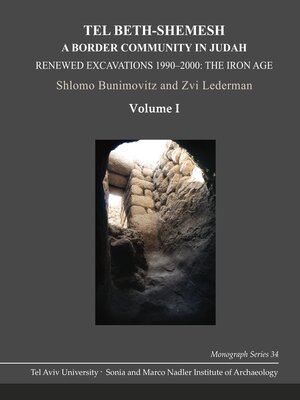Tel Beth-Shemesh
ebook ∣ A Border Community in Judah: Renewed Excavations 1990–2000: The Iron Age · Monograph Series of the Sonia and Marco Nadler Institute of Archaeology
By Shlomo Bunimovitz

Sign up to save your library
With an OverDrive account, you can save your favorite libraries for at-a-glance information about availability. Find out more about OverDrive accounts.
Find this title in Libby, the library reading app by OverDrive.



Search for a digital library with this title
Title found at these libraries:
| Library Name | Distance |
|---|---|
| Loading... |
Excavations at Beth-Shemesh are actually a story within a story. On the one hand, they are the story of the archaeology of the Land of Israel in a nutshell: from the pioneering days of the Palestine Exploration Fund, through the "Golden Age" of American biblical archaeology, to current Israeli and international archaeology. On the other hand, they are the fascinating story of a border site that was constantly changing its face due to its geopolitical location in the Sorek Valley in the Shephelah—a juncture of Canaanite, Philistine, and Israelite entities and cultures.
It is no wonder that two celebrated biblical border epics—Samson's encounters with the Philistines and the Ark narrative—took real or imagined place around Beth-Shemesh. In this report, summarizing the first ten years (1990–2000) of archaeological work in the ongoing project of the renewed excavations at Tel Beth-Shemesh, the authors have strived to tell anew the story of the Iron Age people of Beth-Shemesh as exposed and interpreted. Using the best theoretical and methodological tools that modern archaeology has made available, every effort has been made to keep in view archaeology's fundamental duty—to read the ancient people behind the decayed walls and shattered pottery vessels and bring alive their lost world. Furthermore, the story of ancient Beth-Shemesh has been written in a way that will enable scholars, students, and other interested people to learn and understand the life of the communities living at Beth-Shemesh.
As a result, the book is organized in a manner different from usual archaeological site reports. The two volumes will be essential for anyone who wishes the best and latest information on this important site.







